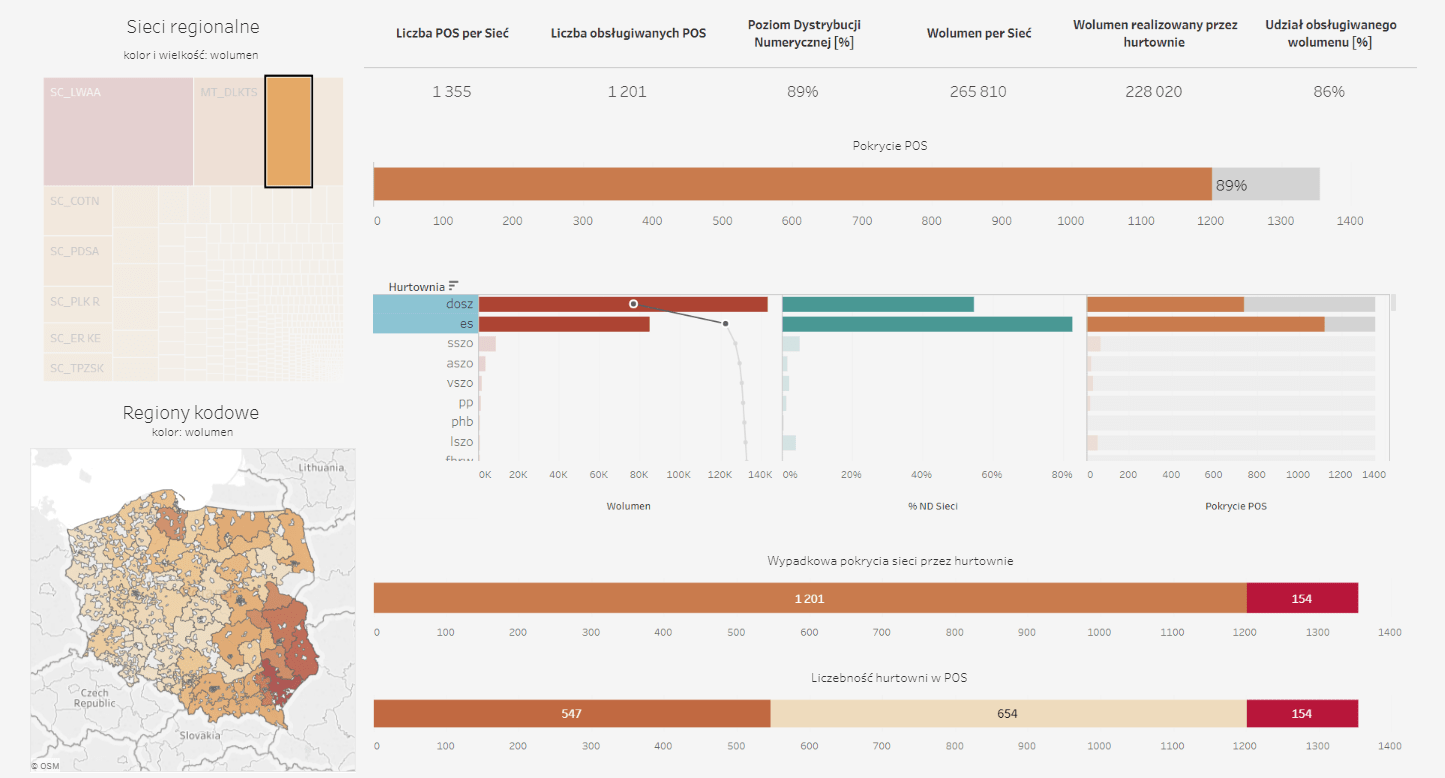Distribution analysis and optimisation

Tableau in distribution
Numerical distribution is one of the basic Trade Marketing calculations.
This indicator shows the number of stores (e.g. a particular chain) where our product is available. It can be expressed as an absolute value (number of points) or as a percentage of the total number of stores.
The aim of the report is to present the distribution structure for individual regional store chains. The basic element of the analysis is to identify the wholesalers with the largest volume of sales to regional chains and the numerical distribution share of this volume.
Analysis of a sample regional network
The report shows that for the entire universe of regional networks, distribution levels have been achieved at 100%. This means that our product reaches every point of sale via the wholesalers. Similar information can be found for a selected regional network – let’s say the ‘SC_GOZK’ network. In this case, the results are similar. The network has 1355 POSs, and our product reaches all of them, which means a numerical distribution rate of 100%.
Within the selected regional network, the dominant position of two wholesalers is evident: “dosz” and “es”. The former realises the largest volume, while the latter has the largest numerical distribution, reaching more than 82% of the POS. The report shows the distribution levels for each wholesaler. Summing up these levels would obviously give a number higher than 100%, which is obviously incorrect. This suggests that there must be a large proportion of stores that both major wholesalers reach with our product. This means an obvious conflict of interest.
Analysis of POS coverage for each wholesaler
By focusing on the two wholesalers in the bar chart, we can see the level of distribution achieved by the two selected partners alone, which is 89%. It can be noticed that we are targeting 1201 retail outlets, while 154 shops receive our product from the other wholesalers.
Focusing on the number of POS reached by the selected wholesalers, one can easily observe the split between the number of outlets reached by one wholesaler and the number of outlets reached by both wholesalers. The last bar chart shows that 654 shops (54%) are served by both partners. The remaining stores (547) work with one wholesaler only.
Given that the two main partners with the best trading conditions and strong negotiating positions are competing against each other at a significant number of POS, it is worth considering whether this situation is beneficial to our business. Its impact on the potential reduction in the margin we receive from our wholesaler relationships should be carefully considered.

